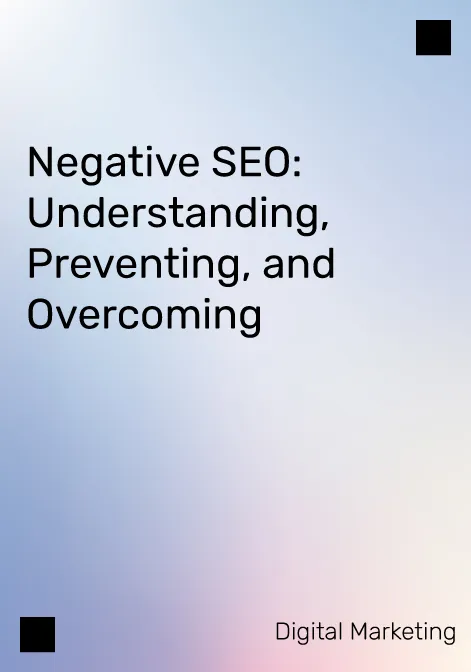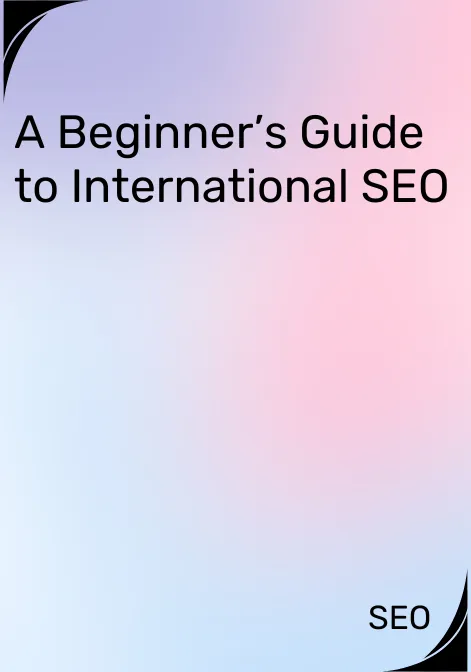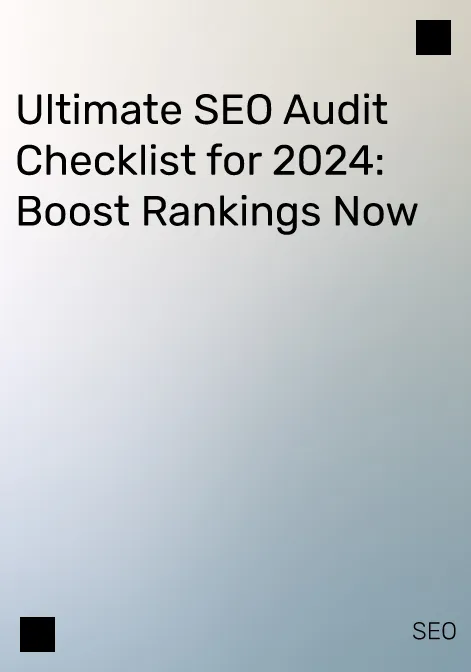Many people wonder what negative SEO is since, with the latest changes in Google’s algorithm, severe penalties have started to be applied to sites that do not meet certain conditions.
In addition, a whole series of techniques can be directed in the form of attacks on a website, seriously damaging it.
In this situation, any SEO Company would say that it is important to know the problem well to implement appropriate interventions. Although it may seem like a worrying issue at first, the reality is that it can be counteracted without a problem with work and strategy.
An attack against the SEO of the site
The term negative SEO refers to all techniques, direct attacks and strategies that seek to harm the positioning of a specific website. Through this, the aim is to get Google to penalize the site, reducing its indexing to make it disappear completely.
These techniques, known as Seo Black Hat, are aimed at unfairly competing with rivals, making them fall. Although it is not interesting to practice these strategies, it is important to consider them so that it is possible to avoid being attacked by a third party.
What is the rationale for negative SEO?
As in many other fields, SEO techniques that seek to harm others are a way of doing business.
It is also essential to consider that developing a quality SEO strategy can be more expensive and time-consuming today than this alternative. However, it is also true that if a search engine’s algorithm detects bad practices, a site can disappear from the map forever.
These techniques allow, in any case, to damage the online reputation of a third party. This makes your fight for keywords much more difficult. As if this were not enough, they are a great advantage when competing since they allow a site to grow while a rival loses positions and has to work to counteract the effects of the attack.
However, although these techniques are a growing reality, it is important not to fall into false beliefs about attacks. In most cases, the punctual penalties to a site are due to the failure of some specific web design section or the site’s development.
If you have doubts about it, it is best to consult an SEO Company who will be able to determine precisely what the problem is and what solutions can be proposed to address it.
In any case, the number of attacks of this type today is increasing. For this reason, it is key to have some knowledge of the subject, improving the ability to react and preventing possible adverse situations.
Additional Reads: Migrate Google Analytics To GA4
Is negative SEO a real threat to a site?
Without a doubt. Anyone with knowledge of Black Hat SEO could work against a site’s online reputation, causing significant drops in its position in terms of search results.
It is not a question of security, design quality, or servers, but it can occur regardless of the effort to optimize the site. Although not everyone is going to be attacked, the truth is that no one can be considered unattainable by these strategies.
In this way, those responsible for the site must be aware of the risk, understanding that, as a website grows, it is more likely to suffer some attack that takes advantage of these techniques.
Can it harm a site a lot?
Absolutely. A large-scale Black Hat SEO attack fools Google into thinking you’re trying to force its algorithm to rank higher.
This will automatically bring with it some penalty from the main search engine. Such punishment can come through two channels: manual or algorithmic penalties. Both have serious consequences.
Manual Google Penalties
This is a direct punishment imposed by the major search engine and, in practice, represents that the site has been directly deindexed. Although it initially raises doubts, it is possible to register in the Search Console, which will generate a notification if a website is penalized in this way.
If you suffer a penalty of this type, it is possible to solve it and then appeal to Google and request a reconsideration of the case. The most frequent thing is that the search engine suggests the changes to implement, and, once fixed, they remove the penalty.
However, the time elapsed without appearing in the engine results can lead to significant PageRank losses.
Additional Reads: Negative SEO
Google Algorithmic Penalties
Unlike the previous case, this is a more complex matter because, even if you are registered in the Search Console, no notification of the punishment is generated. However, one of these penalties can be detected in the event of a drastic drop in visits, which is recorded in Google Analytics.
If this situation is not detected and a reconsideration is not requested from Google, it becomes very difficult to achieve a satisfactory solution. As no advice or guidance is offered to the user, all that remains is to try different options until the Google algorithm is updated, trusting that it will be enough.
Can Google help in the case of negative SEO?
Google has created guidelines and paths for people to try and fix any issues with penalties. However, it puts its interests first, so it’s not always easy to get a project affected by SEO Black Hat back on track.
This is not due to a lack of will on the part of the search engine but to the fact that there are too many web pages to be able to do a personalized follow-up of all of them. This is not a disclaimer, as the company actively responds via forums, notifying users and providing guides. However, they are not always enough.
In any case, it is essential to start from the basis that Google assumes that the webmaster himself must take responsibility for any problem with negative SEO. There is no precedent in which the company has intervened directly to help a user, so it is foreseeable that it will never happen.
Information on negative SEO is limited and confusing.
Although it is clear that it exists, Google does not make direct references to the matter, avoiding generating controversy and collective hysteria due to the loss of website positioning. Officially, however, they clarify that no one has the power to influence a website directly.
However, they do not clarify whether this could be done by tricking the algorithm. Being public and notorious that it is possible to achieve it through Black Hat SEO, it seems that the alternative for those responsible for any website is to know the main techniques it uses.
In this way, it is possible to recognize them and intervene before the pertinent penalties are generated, which, as has been seen, can have serious consequences for any project.
Using Linkbuilding to Produce Negative SEO
It is quite well known as the oldest strategy and therefore does not usually work. This is because it requires the attacking site to have some background and authority when generating links. These two characteristics that malicious sites rarely meet.
Negative SEO with low-quality links
As mentioned, it is extremely common since it is not complicated to plan and execute this strategy, which is also quite cheap. Part of the basis of inserting massive links in any blog, forum, or space on the Internet that is not being moderated.
These links are manifested through the sudden arrival of thousands of them on the site, with unknown origins or dubious credibility. It can be combated by adding the “no follow” attribute to these links so that their effects are moderated, reducing their impact to a minimum.
However, it is important to check that they are links of this type. Confusion between low-quality links, even if it is just one case, could cause damage to the site’s SEO, which would then be very difficult to repair.
Negative SEO with Quality Links
In this case, the attack becomes much more serious. The procedure is similar to the previous case, even though the input speed of the links increases exponentially and gradually. This attack intends to make Google believe that these references have been purchased, causing a penalty.
To combat this attack, it is essential to register the website in Google Search Console since it is the only way to monitor the links correctly. Thus, it becomes possible to identify a change in the trend so that when an excess of links is generated, it would be possible to intervene quickly.
Once the entry of irregular links has been detected, the next step would be to contact the owner of the reference web page, requesting the removal of the links or the insertion, at least, of the “no follow” attribute, so that the impact of the same descends automatically.
If the webmaster does not respond or does not take responsibility, the Disavow tool allows you to disavow the links, which Google could use to ignore, avoiding the penalty.
However, it is advisable not to become obsessed with these negative links since a problem only occurs when their number increases extraordinarily. It is not necessary, therefore, to exhaustively review every one of them, but it is necessary to maintain control over what is happening on the site.
Another relevant consideration is to take a close look at the keywords that are used in those links. Those who seek to cause more damage will always use the words that most interest the site, making Google believe that it is a case of keyword stuffing.
Given this, it is enough to follow the previous steps or, not being possible, fight for these words until the attack ceases or an alternative solution is found.
It should be remembered that, in the face of these massive and clear links, Google usually accepts their repudiation, so it is possible to combat these threats effectively.
Negative SEO through Anchor Texts
Surprising as it may seem, one of the most aggressive attacks a site can suffer comes from someone creating an ordinary SEO strategy but using techniques that Google considers abusive.
Given this simulation, it is difficult to prove that it is a farce since anyone could be using Black Hat SEO techniques to position themselves quickly.
To avoid this problem, one of the most important decisions is to avoid using SEO techniques that Google may consider questionable now or in the immediate future. Moving on the edge of legality within the rules of the search engine is a risky bet, and, in addition, it does not usually end well.
As if this were not enough, relying on strategies such as generating links on blogs that are no longer active or using exact keywords for commercial purposes is the most direct way to cause the site to be massively attacked.
Bulk links with anchor text that contain spam
If a thorough review of the links is carried out, it is possible that strange keywords can be found within the anchor text of the links. When this occurs, it is usually really rare terms that the person generating the content would never have used.
It is easy to recognize this type of attack since the terms will have a low density within a site’s total. In addition, they tend to include themes that have nothing to do with it.
However, it is important to consider that this attack may represent a competitor’s first step to attacking a site. This is a poor strategy, which rarely works but could escalate into a serious problem.
If these keywords are not frequent in the content, it is not an issue that should cause any concern. This is especially true when it comes to keywords that refer to the world of piracy or do not use the same language.
Google‘s detection systems perceive this type of situation so that it is not a successful attack unless they are completely ignored, and the links are passed through due to poor management.
As a general rule, with few exceptions, it is very unlikely that this will generate any penalty. Furthermore, such terms will tend to disappear over time as the low-quality sites from which they originate disappear.
Bulk links with anchor text containing main or commercial keywords
Things get complicated if an attack involves the massive entry of links with the “do follow” attribute. Especially if they include keywords that have a certain frequency on the site or are included in the content regularly. In this case, the attack will likely be successful unless something is done about it.
In this case, Google will likely mistakenly detect that all the keywords coming through those links are being misused to generate rankings. Thus, it would nullify the value they bring to the web, causing a huge drop in positioning that will be difficult to recover.
The problem is that, when intervening, the detection tool does not differentiate between quality and fraudulent links. Therefore, when the user intervenes, it is already too late, losing all the value of the keywords.
What can you do about it?
Once again, the first step is carefully examining the keyword density in the link anchor texts. This can be done through a historical record of the same, which will allow examining how things were before, during and after the attack.
When the affected keywords have already been detected, it is essential to detect the profile that Google considered valid before the attack, reducing the density of those keywords as much as possible.
However, despite the criticality of the situation, the change must be made progressively. This means that the density of the keyword should not drop all at once but little by little, naturally. If the situation does not improve, it will be necessary to continue reducing the density until it does.
At the same time, it will go a long way to improve things by creating new content and getting quality links pointing to the site using branded or neutral keywords. It is essential to avoid the use of exact keywords, at least until the attack stops.
Negative SEO through Toxic Domains
One of the most common techniques to avoid penalties when moving content from one URL to another is temporarily redirecting site traffic. This generates a penalty that, sooner or later, ends up affecting both the old domain and the new one since it is something that does not sit well with the Google algorithm.
At this point, an opportunity for an attack is generated since a competitor could take advantage of the vulnerability to redirect a penalized domain to a specific website, causing an even greater penalty.
How to avoid negative SEO of this type of Domain?
First, it is essential to identify if the domain’s authority has fallen or is falling rapidly. If this happens, it is important to include the redirected domain in the Disavow file so that links are disavowed as much as possible.
Beyond this, it is a priority to identify the hosting where the toxic domain is hosted, letting the administrators know your situation. By doing so, under applicable law, they will likely remove the redirect or outright suspend the account carrying out this irregular activity.
Some pages with a high reputation may send a link organically, generating negative results. If this happens, it is important to verify the reasons, taking the appropriate legal measures if a suspected link may have been bought or a defamation campaign on the network.
Negative SEO through organic links
Achieving quality organic links is one of the most difficult tasks. Once achieved, they must remain there since they generate authority and positioning for the site without needing anything. A situation that, almost always, the rivals take advantage of.
How is this achieved? Normally, it is done through identity theft or by impersonating third parties. Sending an email stating that removal is required can lead to dropped links, ruining your site’s organic link strategy and seriously hurting your SEO.
It is also common to come across numerous publications on pages that make false reviews of a website or a site, publishing them from Google My Business or similar, since it attacks the positioning and, in addition, seriously damages the online reputation of the site.
Can you do something about it?
As always, yes, although it requires work. It is essential to monitor the most relevant links for the site, always contacting the webmaster in case they disappear so that what has happened can be discovered.
Organic links are one of the most valuable pieces of building your site’s reputation and ranking, so you must keep a close eye on them.
In addition, monitoring reviews of the site will be of great help, in the same way that identity theft or attempts to harm a site that violates people’s rights should be reported. This can be done with Google, other search engines and, of course, hosting companies. However, it is possible to do even more.
Negative SEO due to duplicate content
Another frequent strategy is to use duplicate content to damage the positioning of a third party. This is achieved by generating copies of the articles published indiscriminately on other domains. Google’s systems detect fraud, punishing those who copy.
Sometimes, with the right technique, the search engine can be fooled, causing it to penalize the site that originally published the information.
How is this achieved? The attacker has to get the article indexed in Google before his target. If this happens, the last one to be indexed will be considered the domain that duplicates the content.
This is full-fledged intellectual property theft, but it becomes very difficult to prove who posted earlier and who posted later on the Internet.
This being the case, urgent intervention is essential since, if nothing is done, the position will be lost over time as the penalties occur.
Although there are guides that recommend continuing publishing and prevail through rapid indexing, the reality is that only an intervention guarantees that penalties are avoided. Black Hat SEO techniques are increasingly sophisticated, so it may happen that, even if it is published following a security criterion, one of the articles is positioned, causing a punishment from Google.
As has been seen, penalties are something that, once established, are difficult to avoid. In this way, it is better to prevent it than to ask Google to reconsider the case later.
What can you do about it?
The easiest solution is to index all articles as soon as they are published, making it much more difficult to fool Google. The search engine will know the original content, which should avoid a good number of penalties.
Although this measure will solve the problem to a large extent, it is essential to go one step further and contact the person responsible for the website, requesting that they remove the duplicate content.
Even if the suspicion is clear, it is always possible that you have been the victim of an attack and are unaware that someone is posting on your site without your permission.
If, despite this, the webmaster persists in his behavior, it will be necessary to take things to a new level. The most effective solution is to contact the hosting to report the situation and do the same with Google so that the attack will lose more and more strength.
In addition, it is possible to configure alerts in Google in case of duplicate content, avoiding disappointments in the future.
Negative SEO is combated with a professional defense.
Although web admins can take intervention measures when attacks have already occurred, it is essential to have a prevention-oriented line of defense. This is because, in most cases, these situations are counteracted with exhaustive site management, with attention to vulnerabilities and caution in the most delicate moments.
Competitors are willing to do whatever it takes for certain keywords, waiting for the right moment to steal them from their rivals, even if only for a few days. Through this, real results are achieved, so although it is not necessary to be alarmed, it is important to be aware that the threat is real.
For this reason, and especially in online business, it is essential to work with foresight and strategy, putting yourself in the hands of true professionals.
Anyone can run a small blog or a website just starting, but in professional and highly competitive environments, things are likely to get complicated. In addition, as has been seen, the attacks can occur suddenly.
If the links are controlled daily, the keyword density is reviewed, and the site is registered in Search Console, it seems difficult for a website to be a victim of negative SEO or Black Hat SEO techniques.
However, betting on Matic Solutions as an SEO agency or SEO consultant is the best guarantee to ensure that a page is safe. There are no perfect formulas, and it is always possible for an attacker to dedicate many resources to attacking a website. Still, it will be possible to enjoy more peace of mind.




